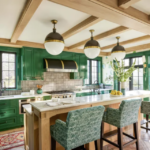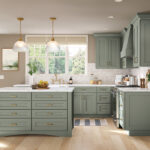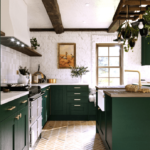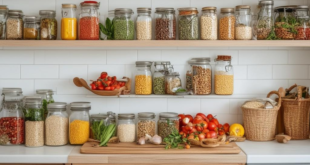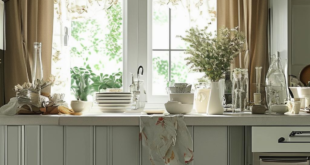Green kitchens have become increasingly popular in recent years as people become more conscious of their impact on the environment. A green kitchen is not just a color scheme, but a design concept that focuses on sustainability, energy efficiency, and environmental responsibility.
One of the key components of a green kitchen is using eco-friendly materials. This includes using sustainable materials such as bamboo, cork, and reclaimed wood for countertops, cabinets, and flooring. These materials are not only environmentally friendly, but they also add a unique and natural touch to the kitchen.
Another important aspect of a green kitchen is energy efficiency. Appliances that are energy star rated can help lower energy consumption and reduce utility bills. LED lighting is also a great option for green kitchens as they use less energy and last longer than traditional light bulbs.
In addition to using eco-friendly materials and energy-efficient appliances, green kitchens also focus on waste reduction. Recycling and composting stations can be incorporated into the design to encourage proper waste disposal. Water-saving fixtures such as low-flow faucets and dual-flush toilets can also help conserve water in the kitchen.
Green kitchens can also incorporate sustainable practices such as growing herbs and vegetables indoors or in a garden outside the kitchen. This not only provides a fresh and organic food source but also reduces the carbon footprint of transporting food from farm to table.
Overall, a green kitchen is a combination of sustainable materials, energy-efficient appliances, and eco-friendly practices that can help reduce our impact on the environment. By incorporating these principles into kitchen design, homeowners can create a beautiful and environmentally responsible space that is both stylish and sustainable.
 Decorationg Interior Design
Decorationg Interior Design




